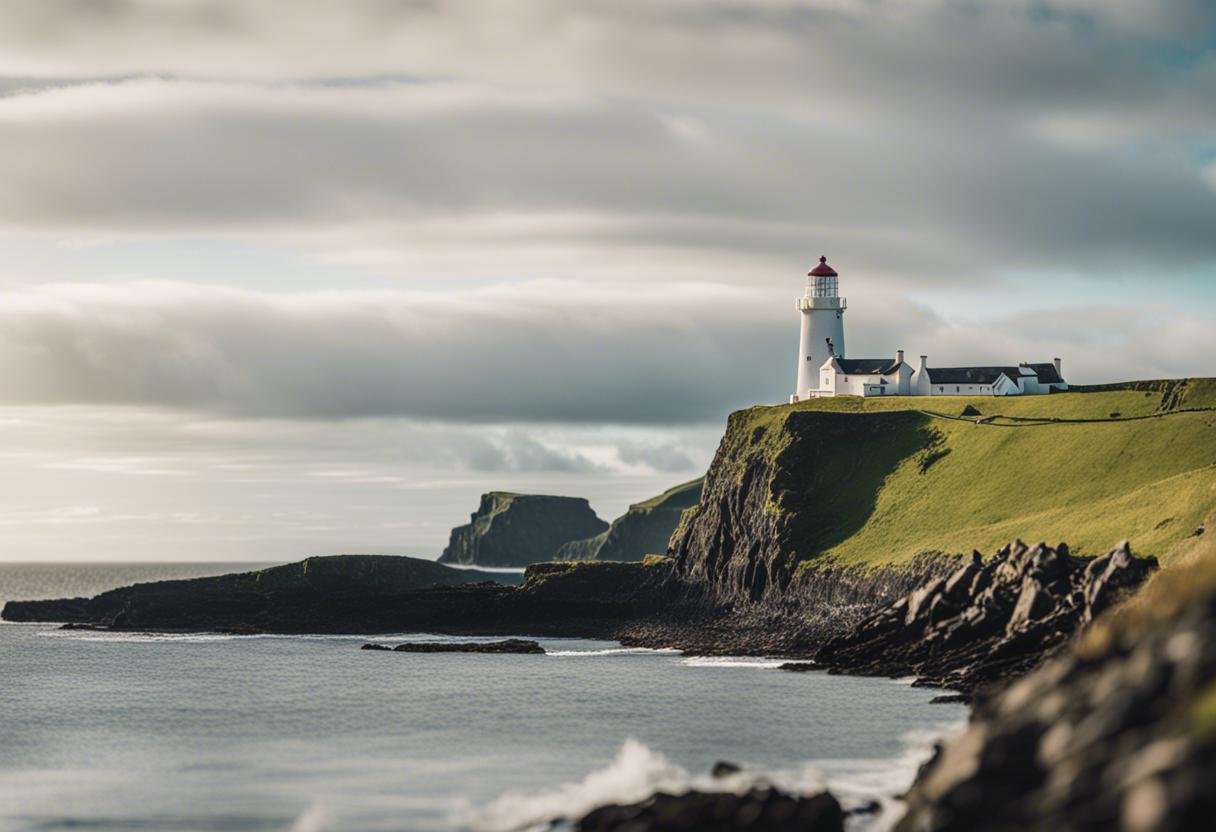For many ages, the lighthouses of Ireland have bravely withstood fierce tempests, providing a beacon of solace for seafarers and inciting an enigmatic allure for land dwellers. Some of Ireland’s most renowned lighthouses—such as Blacksod, Fanad, Ballycotton, Hook, and Wicklow Head—boast captivating histories, and they have seen evolving roles in contemporary times.
Half a century or more ago, before the era of container shipping, the area would’ve been inundated with an incessant flow of ships in transit, remarks Philip Lawlor, surveying Belfast Lough from Blackhead Lighthouse.
This unmanned Antrim lighthouse sits on the lough’s northern side, near the coastal hamlet of Whitehead, sandwiched between Carrickfergus and Larne. To the east lies Scotland, to the south, the Copeland Islands of County Down and the lighthouse on Mew Island. To the southeast is the Isle of Man, and from here, on a clear night, one can discern “the loom”—the atmospheric illumination—from its northeastern lighthouse, Lawlor informs. He clarified that the “loom” refers to the light’s atmospheric glow—concealed behind the horizon—rather than the source of the beam.
Completed in 1902, Blackhead is a relatively recent addition to Ireland’s lighthouse fraternity, Lawlor points out, stating it’s only 122 years old. Most of the others were set up in the 1840s and 1850s, an era witnessing a surge in lighthouse constructions.
From London originally, Lawlor has been associated with the Commissioners of Irish Lights for two decades. He began his career as a maintenance electrician—humourously attributing his recruitment to an advertisement seeking assistance with light work—and now guides a team responsible for the upkeep of 70 lighthouses marking Ireland’s most vulnerable coastlines.
“The work is relentless,” he comments, before adding that extensive projects could require up to nine months of meticulous preparation. Just when everything seems ready, an unsuspected bout of storms might hit, causing delays that could extend into weeks or even months, he adds.
Currently, three men are situated on the deserted island of Inishtrahull, which lies six miles north of Malin Head in Co Donegal, focusing on refurbishing the roofs of local buildings. Moreover, a team of painters in Roche’s Point, Cork is also engaged, preparing to undertake their next task on Valentia Island in Kerry, that necessitates a new coat of paint on the lighthouse.
Given a choice, the favourite spot is Inishtrahull lighthouse, appreciated for its serene cliffside walkways and spectacular summer-time beauty. It’s singled out as an ideal location to spend a week.
Noteworthy is the 16 metre-high octagonal tower of the Blackhead lighthouse sitting on a minor cliff. The inside architectural style is striking, with steps ascending to the first floor, adorned on one side by an elegant brass handrail, and at the top, a metallic red-like-a-pepper handrail. Complementing the first floor’s curve is the wooden panelling.
Lawlor appreciates the meticulousness that has been put into the design, admiring even the minutest of details and the craftsmanship responsible for such precision. He speaks highly of the perfect curvature of the panels that did not necessarily need to be that way.
An imposing pillar of cast iron painted in marine blue extends up the centre of the tower. Lawlor explicates that this serves as a weight tube. The duty of the keeper on watch was to manually wind the weight up through a system of pulleys, triggering the rotation of the lens inside the tube. The lens encases the lighthouse’s illumination.
A diminutive bell would ring after the weight reached a specific drop point. This indication served as a reminder to winding up the weight again. Each lighthouse had a different weight-fall time ranging from 20 to 40 minutes, keeping the keeper responsibility high, with no room for succumbing to sleep.
The lens, encircling the light, weights six to seven tons, and is set on a cast-iron stand, seemingly floating atop a mercury bath. Lawlor elaborates that the mercury’s chemical properties allow it to bear the lens’ weight, affording a seamless movement.
Powered by a relatively modest motor, the lighthouse’s rotational system can be halted by merely applying finger-based pressure. In clear weather conditions, its beacon can be spotted from approximately 25 nautical miles away, with a nautical mile being slightly more extensive than a conventional land mile.
As pointed out by Lawlor, contemporary electronics and technology are prone to failures. In his view, this is where the lighthouse steps in, acting as a primary aid to navigation, while the electronic systems serve as backup.
In connection with the lighthouse are three residences previously occupied by the lighthouse keepers, now leased out through the Irish Landmark Trust. Manager Pamela Steward disclosed that these accommodations are highly sought after. Besides the authentic wooden windows, doors, and fireplaces, occupants also enjoy a breathtaking panorama from every window in the house.

